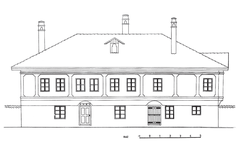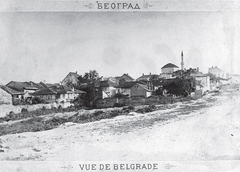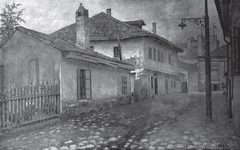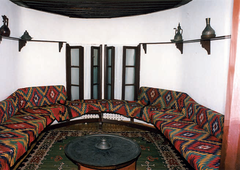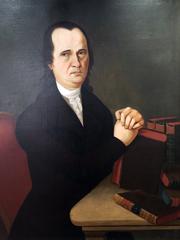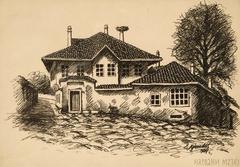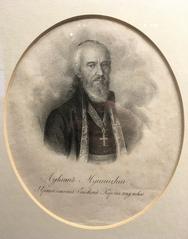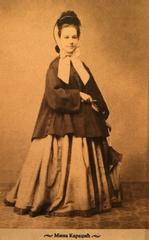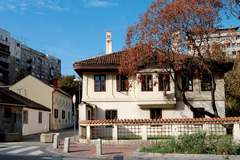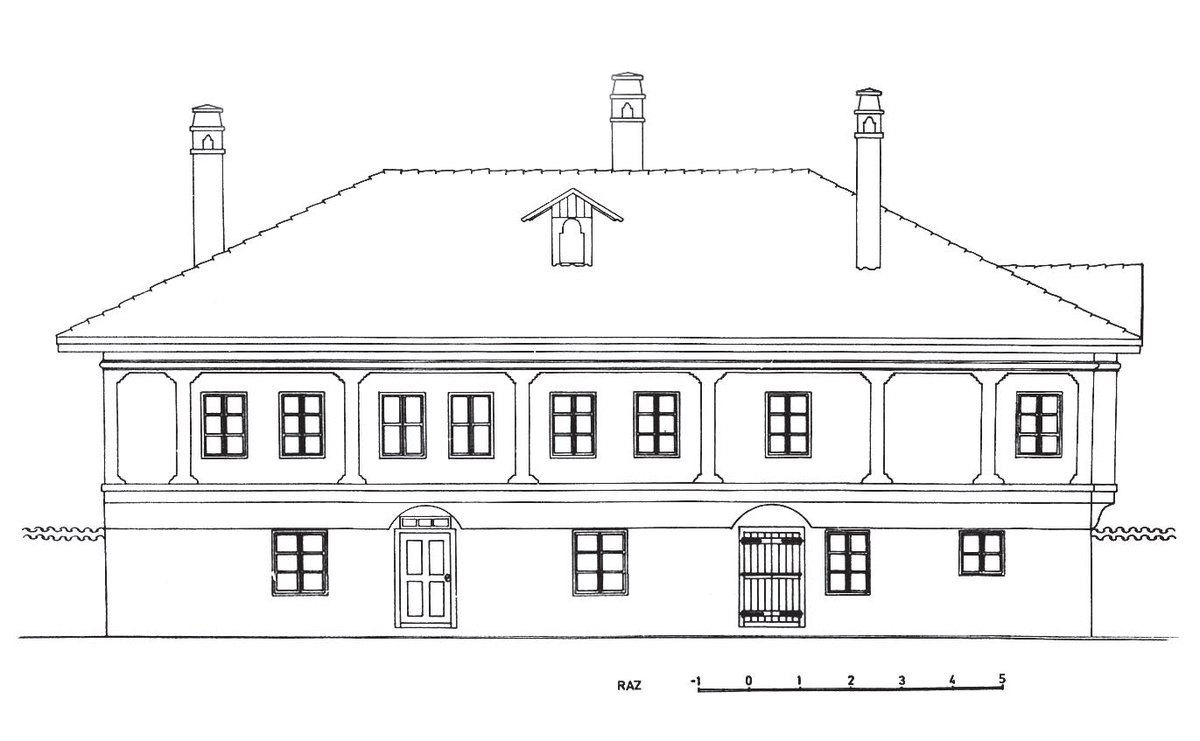
Visiting the Museum of Vuk and Dositej, Belgrade: Comprehensive Guide to Tickets, Hours, and Tips
Date: 14/06/2025
Introduction
Nestled in Belgrade’s historic Dorćol district, the Museum of Vuk and Dositej stands as a cultural monument, preserving the profound legacies of Dositej Obradović and Vuk Stefanović Karadžić—two giants of Serbian enlightenment and language reform. Housed in one of the city’s oldest Ottoman-era buildings, the museum offers an immersive journey through Serbia’s educational, linguistic, and national history. Whether you are a history enthusiast, linguist, or a traveler eager to explore Belgrade’s historical sites, this museum is a must-see (KOTO.rs, National Museum of Serbia).
Table of Contents
- Historical and Architectural Significance
- The Great School and Educational Heritage
- Biographical Highlights: Obradović and Karadžić
- Permanent Collections and Museum Exhibits
- Temporary Exhibitions and Educational Programs
- Visitor Information: Tickets, Hours, and Accessibility
- Nearby Attractions and Itinerary Suggestions
- Tips for an Enriching Visit
- Frequently Asked Questions (FAQ)
- Conclusion and Call to Action
- References
Historical and Architectural Significance
The Museum is housed in an 18th-century Ottoman-style residence, one of Belgrade’s oldest surviving buildings. Constructed between 1739 and 1789, the structure exemplifies typical Balkan-Ottoman architecture, featuring a tile roof, wooden ceilings, and a layout separating public (selamluk) and private (haremluk) areas (Google Arts & Culture).
Designated as a cultural monument of exceptional significance in 1946, the building underwent careful restoration in 2011, preserving its authentic character while meeting modern museum standards (KOTO.rs, National Museum of Serbia). Its very walls bear witness to centuries of Belgrade’s history.
The Great School and Educational Heritage
Between 1809 and 1813, the building served as the home of the Great School (Velika škola), Serbia’s first institution of higher education and direct forerunner of the University of Belgrade. Founded by Dositej Obradović, it marked the birth of modern Serbian education and hosted students such as Vuk Stefanović Karadžić (Wikipedia, KOTO.rs). This legacy is central to the museum’s narrative.
Biographical Highlights: Obradović and Karadžić
Dositej Obradović (1739/42–1811)
A philosopher, writer, and the first Serbian Minister of Education, Obradović was a champion of rationalism, secular education, and enlightenment ideals. Though most personal belongings were lost in a fire in 1813, the museum preserves his correspondence, paintings, and first editions, illustrating his vision for a modern Serbian society (Visit Belgrade, Belgrade My Way).
Vuk Stefanović Karadžić (1787–1864)
Renowned for reforming the Serbian language and standardizing its alphabet, Karadžić’s work on dictionaries, folk literature, and grammar shaped Serbian identity. Personal artifacts and manuscripts—many donated by his daughter Mina—form a major part of the museum’s displays (National Museum of Serbia, Belgrade My Way, Google Arts & Culture).
Permanent Collections and Museum Exhibits
Vuk Stefanović Karadžić Collection
A highlight of the museum, this collection features original manuscripts, first editions, personal effects (such as Karadžić’s spectacles and writing desk), and correspondence with figures like Jacob Grimm. Visitors gain direct insight into his linguistic reforms and contributions to Serbian culture (Museum of Vuk and Dositej).
Dositej Obradović Collection
Despite the loss of many personal items, Obradović’s collection includes rare books, travel diaries, first editions, and documents related to the founding of the Great School. Artifacts like his quill pens and inkstands connect visitors to the spirit of Serbian enlightenment (Serbia.com).
Ethnographic and Linguistic Artifacts
The museum holds traditional costumes, musical instruments, rare books, and examples of pre- and post-reform Serbian scripts. Interactive displays allow comparison of alphabets and highlight Karadžić’s impact on language (Belgrade Museums).
Temporary Exhibitions and Educational Programs
Rotating Exhibitions
Temporary exhibitions explore Serbian language, literature, and education, often featuring unique loans from other institutions. Recent themes include “Vuk’s Correspondence with European Scholars” and “The Evolution of Serbian Schoolbooks.” Bilingual texts ensure accessibility for all visitors (Museum Exhibitions).
Educational Workshops and Interactive Displays
The museum offers hands-on workshops on calligraphy, folk storytelling, and language games, particularly for school groups and families. Annual events such as “Vuk’s Day” and “Dositej’s Day” include lectures and performances (Serbia Travel).
Visitor Information: Tickets, Hours, and Accessibility
Location and Getting There
Address: 21 Gospodar Jevremova, Dorćol, 11000 Belgrade, Serbia.
The museum is easily accessible by public transport (bus, tram, and trolleybus stops nearby), and is a short walk from major landmarks like Kalemegdan and Republic Square (National Museum Belgrade). Parking is limited; public garages are recommended.
Visiting Hours (as of June 2025)
- Monday: Closed
- Tuesday–Friday: 10:00–17:00
- Saturday–Sunday: 11:00–17:00
Check the official website for updates, especially for holidays and special events.
Tickets
- Adults: 300 RSD
- Students/Pensioners: 200 RSD
- Children under 7: Free
- Family ticket: 600 RSD
- Free entry on Sundays Tickets are purchased at the museum; group and guided tour rates are available.
Accessibility
Due to the building’s historic nature, accessibility is limited (no elevator, steep stairs). Staff can assist visitors with disabilities; virtual tours are available online (Accessibility Info).
Facilities
Restrooms are available; there is no museum café or shop, but plenty of options are nearby. The museum shop offers books and souvenirs related to Serbian language and history.
Nearby Attractions and Suggested Itineraries
- Skadarlija: Bohemian quarter with traditional restaurants (Skadarlija Info)
- Kalemegdan Fortress: Iconic fortress and park with river views (Kalemegdan Fortress)
- National Museum of Serbia: Major art collections at Republic Square (National Museum)
A suggested itinerary: morning at the Museum of Vuk and Dositej, lunch in Skadarlija, afternoon at Kalemegdan.
Tips for an Enriching Visit
- Allocate 60–90 minutes for your visit.
- Weekday mornings tend to be quieter; Sundays offer free entry but may be busier.
- Most exhibits are bilingual (Serbian/English); guided tours in English are available with advance booking.
- Photography is allowed in most areas (no flash/tripods); check with staff for restrictions.
- Bring cash (RSD) for tickets and shop purchases.
- Dress comfortably; be prepared for uneven floors and stairs.
Frequently Asked Questions (FAQ)
Q: What are the Museum’s opening hours?
A: Tuesday–Friday 10:00–17:00; Saturday–Sunday 11:00–17:00; closed Mondays.
Q: How much are tickets?
A: 300 RSD for adults, discounts for students/pensioners, free for children under 7, free entry on Sundays.
Q: Are guided tours available?
A: Yes, in Serbian and English; book at least 48 hours in advance.
Q: Is the museum accessible to people with disabilities?
A: Accessibility is limited; contact the museum for assistance.
Q: Can I take photos?
A: Photography for personal use is allowed in most areas; check with staff for details.
Conclusion and Call to Action
The Museum of Vuk and Dositej is a cornerstone of Belgrade’s cultural scene, offering a deep dive into the roots of Serbian education and language. Its evocative setting, rich collections, and engaging programs make it ideal for anyone interested in Serbia’s national identity and intellectual history. For the latest information on visiting hours, exhibitions, and events, visit the official museum website and follow their social media channels. Download the Audiala app for interactive guides and plan your visit to this extraordinary institution.
References and Further Reading
- Museum of Vuk and Dositej, National Museum of Serbia
- KOTO.rs
- Official Museum Website
- Belgrade Beat
- Serbia Travel
- National Museum Belgrade
- Audiala App
- Google Arts & Culture
- Belgrade Museums
- Serbia.com
- Skadarlija Info
- Kalemegdan Fortress
